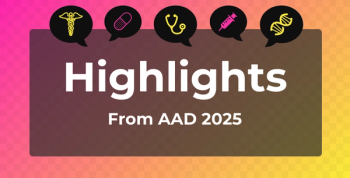
Ruxolitinib Cream Shows Long-Term AD Control in Children Aged 2 to 11 Years
Key Takeaways
- Ruxolitinib cream effectively managed mild to moderate pediatric AD, achieving significant disease control over 52 weeks with both 0.75% and 1.5% strengths.
- The study showed substantial lesion clearance and prolonged periods off treatment, with no serious treatment-related adverse events reported.
New data highlight efficacy, safety, and time off treatment with as-needed ruxolitinib cream in pediatric atopic dermatitis.
At the
The first poster from the TRuE-AD3 study focused on evaluating long-term disease control and safety of ruxolitinib cream in children aged 2 to 11 with moderate and/or more extensive AD, defined as an Investigator’s Global Assessment (IGA) score of 3 and/or 10% or greater affected body surface area (BSA) at baseline.1 In this randomized, double-blind trial, children received twice-daily ruxolitinib cream (0.75% or 1.5%) or vehicle for 8 weeks, followed by 44 weeks of as-needed treatment with either ruxolitinib cream strength.
Among 180 children initially randomized to ruxolitinib with an IGA score of 3, 71.4% to 74.6% achieved clear or almost clear skin (IGA 0/1) at week 52, and mean affected BSA decreased to 2.0% to 2.3%. Similar improvements were observed in the subset with 10% or greater BSA at baseline. Both concentrations of ruxolitinib cream were well tolerated, with no serious treatment-related adverse events reported, supporting its sustained efficacy and safety in managing moderate pediatric AD.
The second poster evaluated long-term disease control and time off treatment among children aged 2 to 11 with mild to moderate AD who received ruxolitinib cream in the TRuE-AD3 study.2 After an initial 8-week randomized treatment period, patients who had received ruxolitinib cream (0.75% or 1.5%) continued into a 44-week long-term safety (LTS) period with as-needed application. Among those who applied at least 1 dose during the LTS period (n = 119 for 0.75%; n = 114 for 1.5%), affected BSA decreased from 9.9% to 11.1% at baseline to 1.9% to 2.0% at week 52.
Clear or almost clear skin (IGA 0/1) was achieved at least once during the LTS period by 80.7% (ruxolitinib, 0.75%) and 91.2% (ruxolitinib, 1.5%) of patients, and these scores were maintained for 60.0% and 69.0% of visits, respectively. Additionally, median days off treatment due to lesion clearance totaled 136.0 and 151.0 for the 0.75% and 1.5% groups, respectively, accounting for approximately half the LTS period. Both regimens were well tolerated with no serious treatment-related adverse events, underscoring the effectiveness of as-needed ruxolitinib cream in maintaining disease control and reducing treatment burden in pediatric AD.
Together, these findings from the TRuE-AD3 study reinforce the long-term efficacy, safety, and practical benefits of ruxolitinib cream as an as-needed monotherapy for children with mild to moderate AD. Whether managing more extensive disease or maintaining remission over time, ruxolitinib cream enabled substantial lesion clearance, prolonged periods off treatment, and a favorable safety profile over 52 weeks. These results offer promising evidence to support its use as a long-term treatment option tailored to the needs of pediatric patients and their caregivers.
References
1. Eichenfield LF, Simpson EL, Armstrong AW, et al. 52-week ruxolitinib cream disease control and safety in children with moderate/more extensive atopic dermatitis. Poster presented at: Society for Pediatric Dermatology Annual Meeting 2025; July 23-26, 2025; Seattle, WA. Abstract POS-05.
2. Eichenfield LF, Joyce JC, Lee LW, et al. Ruxolitinib cream demonstrated long-term disease control with time off treatment in children with atopic dermatitis. Poster presented at: Society for Pediatric Dermatology Annual Meeting 2025; July 23-26, 2025; Seattle, WA. POS-18.
Newsletter
Stay ahead of policy, cost, and value—subscribe to AJMC for expert insights at the intersection of clinical care and health economics.







































